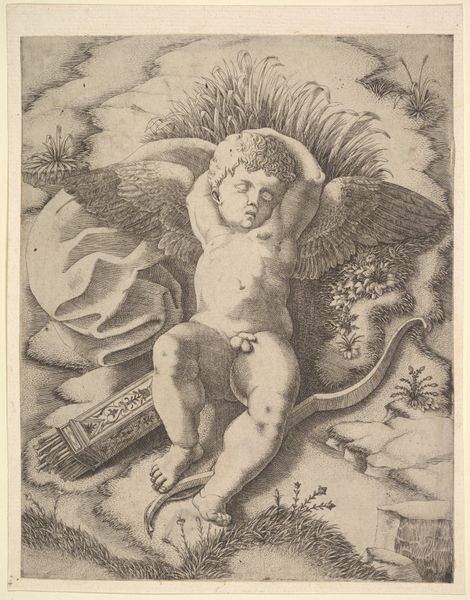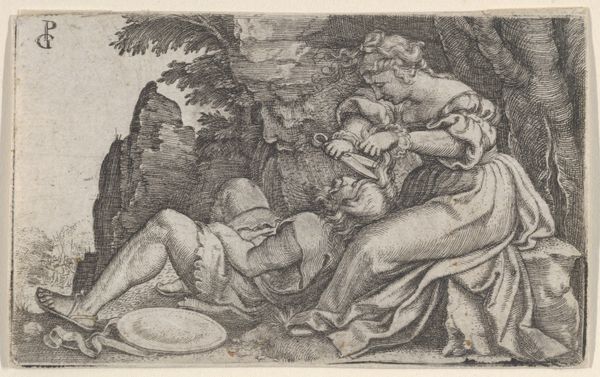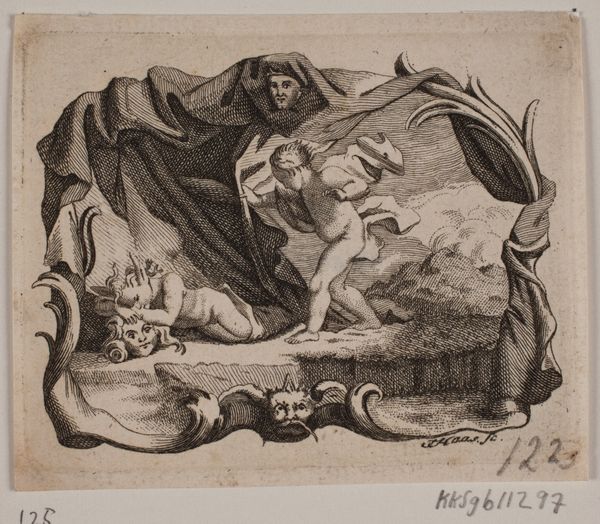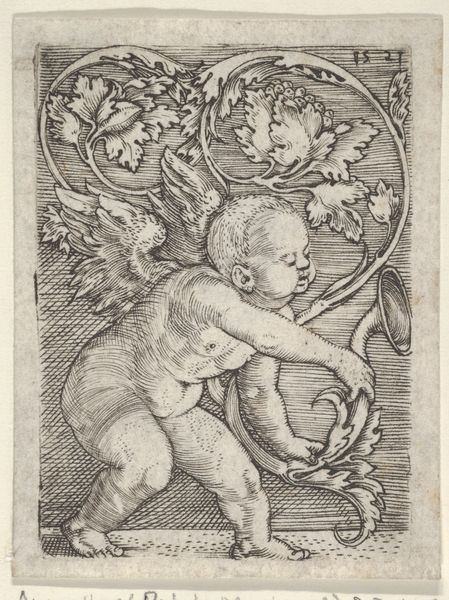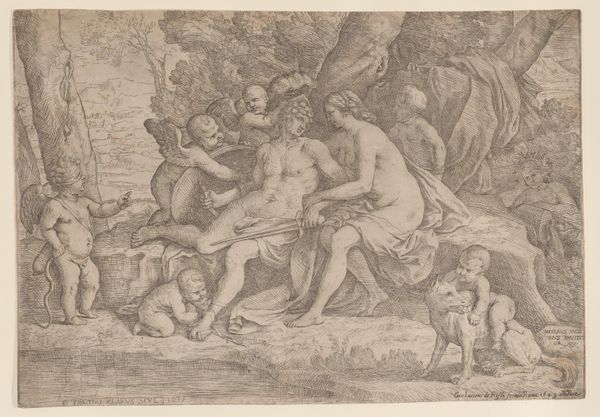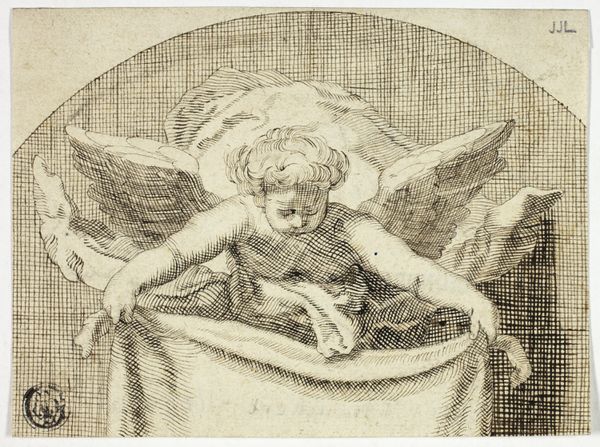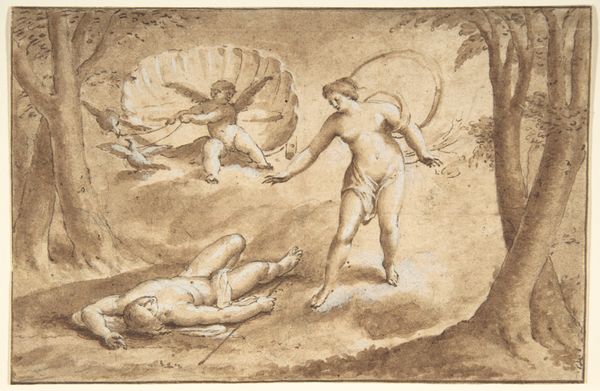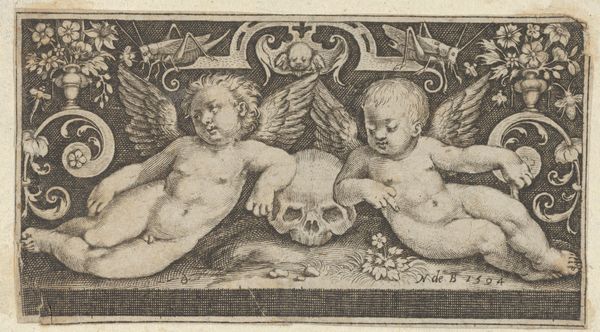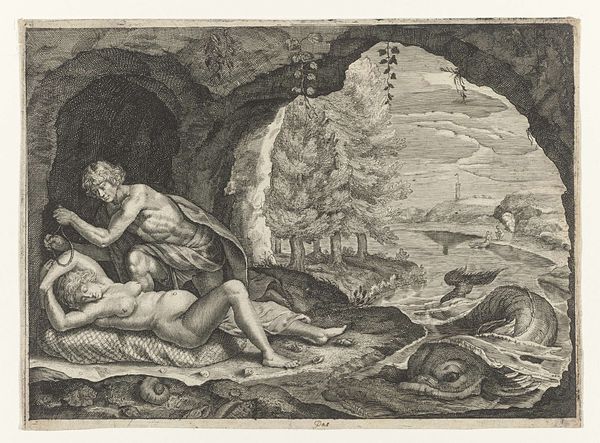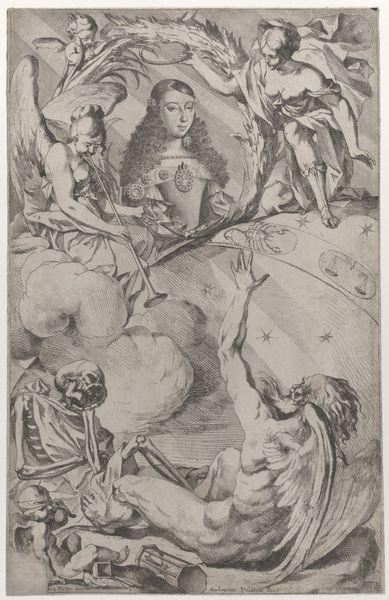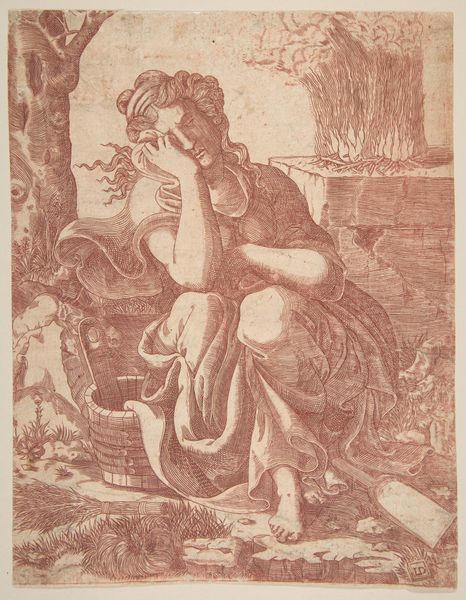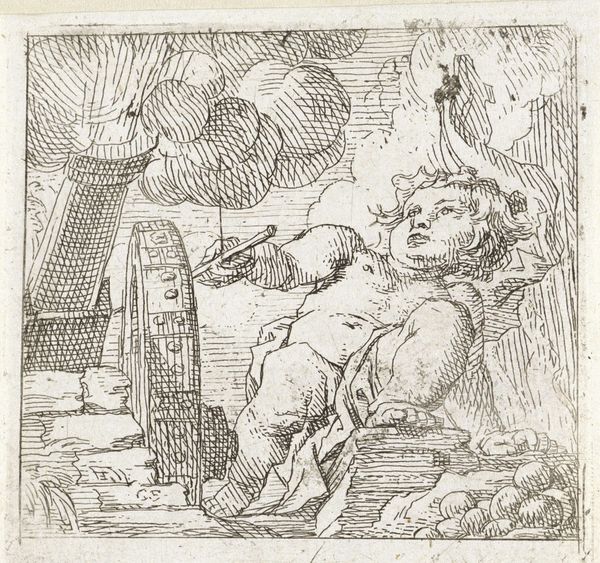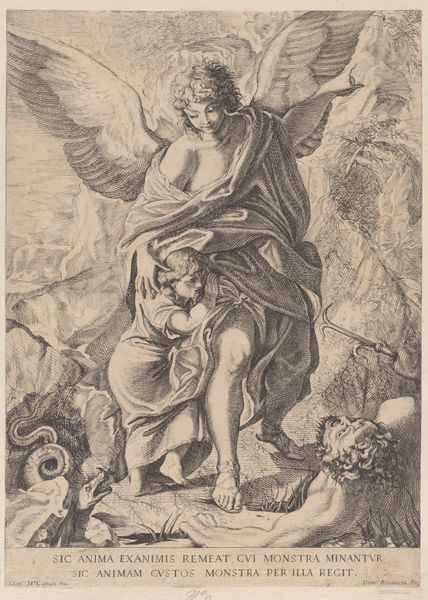
drawing, paper, ink
#
drawing
#
baroque
#
charcoal drawing
#
figuration
#
paper
#
ink
#
genre-painting
#
academic-art
#
nude
Dimensions: 83 mm (height) x 116 mm (width) (bladmaal)
Editor: This ink and charcoal drawing from the 17th century, "Putti, liggende på hermelinskåbe," attributed to Jürgen Ovens, has such a casual, intimate feel. The little cherub lounging on the ermine robe looks surprisingly self-assured. What catches your eye? Curator: Immediately, the ermine robe itself speaks volumes. Ermine has historically symbolized royalty and purity. Its inclusion here suggests an attempt to elevate or ennoble this cherubic figure. But does the figure's casual pose undermine that intent, perhaps offering a commentary on the very nature of power or innocence? Editor: That's fascinating! I hadn't thought about the robe as a symbol itself. The putto does seem quite relaxed for someone associated with royalty. Do you see any connection with religious iconography of the time? Curator: Absolutely. While putti often appear in religious art, particularly in Baroque depictions of heavenly realms, their presence here, combined with the opulent robe, shifts the symbolic weight. Are we meant to see this as divine, earthly, or perhaps somewhere in between – a playful blurring of those lines? Consider, too, how the theatrical backdrop further complicates the narrative, setting a stage for meaning. Editor: It’s amazing how much information can be conveyed through seemingly simple images like this one. It really challenges you to dig deeper! Curator: Precisely! Visual symbols carry so much cultural weight and emotional resonance. Close looking allows us to rediscover and interpret those connections, ensuring that these images remain alive and meaningful.
Comments
No comments
Be the first to comment and join the conversation on the ultimate creative platform.
